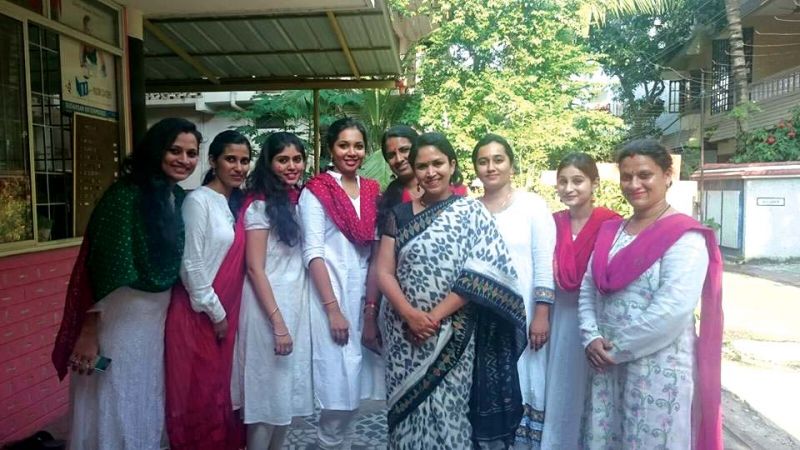Knowing the art of Kathak

The first time Deepali Vichaare came to Kochi, she was mesmerised by the beauty of the place. And she wanted a good reason to come back again and again. Senior Marathi film choreographer and Kathak exponent, Deepali met Susheela Pai who runs the Mudra Centre for Dance and they agreed to do a number of workshops. This was a time Kathak as a classical form was hardly known amongst Keralites. “There were not many Kathak performances happening here five years ago. People were not sure how good this art form is and how different it is from other classical forms. Since it is from UP and Rajasthan, it was hard for people to catch up unless they saw it again and again,” says Deepali.
The association is now conducting a disciplined training and the first batch, which has been training for the past three years, performed for the first time at the Changampuzha Festival. “With growing interest, we came out of workshop module and prepared a syllabus. My students in Kochi had to pass exams to upgrade their levels. This is in the blood of Kerala, they are very used to learning classical forms and the approach to learning dance is very serious.”
So what makes Kathak different? “In Kathak, we directly talk to the audience. Kathak kaheso kathak kahave — a person who tells the story is a Kathak. It is all about Lord Krishna; the raasa leelas of Krishna became Kathak. When Mughals came, it changed with their influence. Initially, it had bhakti rasa; that wow factor chakris (pirouettes) came with the Mughals. After the Mughals left, we have a pure mixture of bhakti and shringar. So experimenting on Kathak is open even though we follow Natya Shastra,” says Deepali, who has over 30 years of experience in Kathak.
Further, she explains, “It is the most beautiful classical style due to its grace. The elements of Kathak are tumri, the natural expression given in our day-to-day lives and then padanth. We recite the thoda, which says ‘I will say and perform’. This helps those who are not from a dance background, and helps them connect to Kathak easily. Then we have tatkar, the foot work, which also has different laya (tempo) — fast and slow. It is like a jugalbandi. Our language is brijabhasha; people may not understand it, but they can understand our bhaava (expression). There is another form gadabhaav, where we don’t use any song. We take the help of instruments to enact a story like Sitaswayamvar.”
Deepali runs the Deepali Vichare’s Academy of Performing Arts in Mumbai and also takes classes internationally. Apart from Kathak, she is also a trained performer in Ballroom dancing, Jive, Flamenco, Merengue and Foxtrot. That said, she has recently experimented with a Kathak-Flamenco collaboration. “Flamenco, a Spanish dance form, is very similar to Kathak, especially in the foot work. This was performed internationally and was well received and now we are doing Ballet and Kathak, in the nritya-natya type that has dialogues and scenes to enact,” says Deepali. She also performed a Nritya natyaka on Draupadi at the recent Changampuzha Festival.
When dance gave her a mode of income, she also made sure that her performance speaks for the women out there — wherever she goes. Giving a strong message, the feminist within Deepali recites a small poem, which translates into “Hey Draupadi, don’t wait for Krishna to come and save you. We are followers of Krishna, we don’t plan to say anything against him, but as as a woman it is your responsibility to save yourself.” The artiste is also a senior choreographer in the Marathi film industry with over 100 films to her credit. “Initially, my main career was film sound choreography, but my inclination was towards an academy. Now, I love to teach and perform dance. I am not sure if I can do it after 50,” she signs off.


